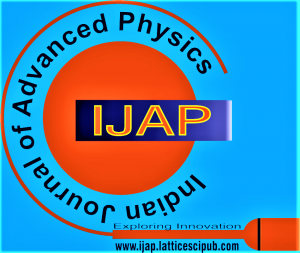![]()
The Existence of Time, Energy, 4 Forces, and Physical Laws Depends on Motion
Debjyoti Deoghuria
Debjyoti Deoghuria, Researcher, Central Library, Bankura University, Bankura, West Bengal, India.
Manuscript received on 28 January 2025 | First Revised Manuscript received on 04 February 2025 | Second Revised Manuscript received on 20 March 2025 | Manuscript Accepted on 15 April 2025 | Manuscript published on 30 April 2025 | PP: 8-10 | Volume-5 Issue-1, April 2025 | Retrieval Number: 100.1/ijap.A105805010425 | DOI: 10.54105/ijap.A1058.05010425
Open Access | Editorial and Publishing Policies | Cite | Zenodo | OJS | Indexing and Abstracting
© The Authors. Published by Lattice Science Publication (LSP). This is an open-access article under the CC-BY-NC-ND license (http://creativecommons.org/licenses/by-nc-nd/4.0/)
Abstract: This paper explores the relationship between motion, time, energy, and forces. It proposes a new framework based on the idea that motion drives time, energy, and forces. Without motion, it is impossible to perceive time, energy, or forces. Motion precedes time because time is created through motion. The concept of time without motion is meaningless. Furthermore, not only time but also all forms of energy and forces depend on motion. Energy is generated, changed, or transformed due to motion. The four fundamental forces-gravity, electromagnetism, the strong nuclear force, and the weak nuclear force-are all dependent on motion. Additionally, physical laws are active because of motion. Without motion, these laws would break down. According to this theory, motion provides a new perspective on fundamental scientific principles, potentially offering insights into the Grand Unified Theory (GUT).
Keywords: Motion Creates Time, Energy, and Forces; Physical Laws Actively Depend on Motion.
Scope of the Article: Astrophysics Physics
